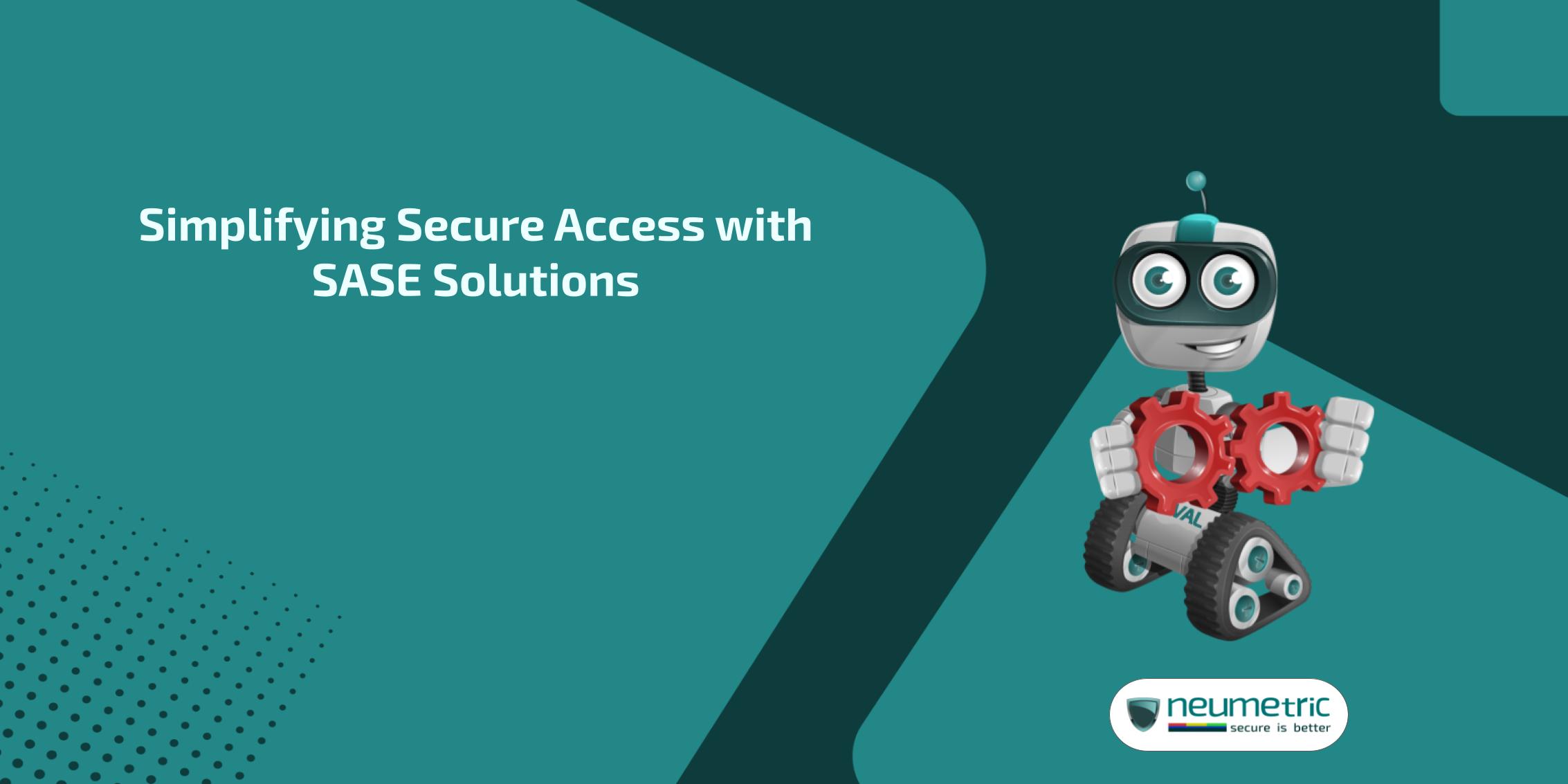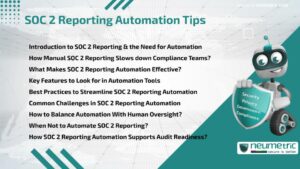Table of Contents
ToggleWhat is SASE?
Secure Access Service Endpoint [SASE] is a new network security concept that is changing the way organizations approach network security & access control. As businesses increasingly adopt cloud computing, remote work & mobile technologies, traditional network security models are proving inadequate in addressing the evolving security challenges. It aims to address these challenges by combining several security technologies into a unified, cloud-delivered service model.
Secure Access Service Endpoint represents a fundamental shift in how organizations secure their networks & access resources. Instead of relying on traditional perimeter-based security models, ittakes a holistic approach by integrating various security capabilities into a single, cloud-native platform. This approach enables organizations to provide secure & consistent access to applications & resources, regardless of the user’s location or the device being used. By consolidating multiple security functions into a unified service, it simplifies security management, reduces complexity & increases overall security by combining multiple security features into one unified service.
The Rise of SASE
Software Defined Wide Area Network [SD-WAN]: SD-WAN is a technology that allows organizations to create a secure, intelligent & optimized network in multiple locations with multiple connections. This model worked well when most users & applications were located within the corporate network. However, with the advent of cloud computing, remote work & the proliferation of mobile devices, the network perimeter has become increasingly blurred, rendering traditional security models ineffective.
To address these challenges, Gartner introduced the Secure Access Service Endpoint concept in 2019, which aims to consolidate several security functions into a single, cloud-delivered service model. It combines various network & security capabilities, such as Software-Defined Wide Area Network [SD-WAN], Secure Web Gateway [SWG], Cloud Access Security Broker [CASB], Zero Trust Network Access [ZTNA] & Firewall-as-a-Service [FWaaS], into a unified, globally distributed service.
The Core Components of SASE
SASE encompasses several key components that work together to provide comprehensive security & access management for modern enterprises. Here are the core components of Secure Access Service Endpoint:
- Software-Defined Wide Area Network [SD-WAN]: SD-WAN is a technology that allows organizations to create a secure, intelligent & optimized network across multiple locations, leveraging various connectivity options, including broadband internet, MPLS & LTE. SD-WAN is a critical component of Secure Access Service Endpoint, providing the underlying network infrastructure for secure & optimized connectivity.
- Secure Web Gateway [SWG]: SWG is a security solution that inspects & filters web traffic, protecting users from malicious websites, malware & other web-based threats. In a Secure Access Service Endpoint architecture, SWG is delivered as a cloud-based service, ensuring consistent security policies across all locations & devices.
- Cloud Access Security Broker [CASB]: CASB is a security solution that provides visibility & control over cloud-based applications & services. It helps organizations enforce security policies, monitor user activities & prevent data leakage in cloud environments.
- Zero Trust Network Access [ZTNA]: ZTNA is a security model that assumes no user or device is inherently trusted, regardless of their location or network. ZTNA enforces strict access controls & continuously verifies user & device identities, ensuring secure access to applications & resources.
- Firewall-as-a-Service [FWaaS]: FWaaS is a cloud-delivered firewall service that provides advanced threat protection, application control & network segmentation capabilities. It acts as a perimeter defense for organizations, protecting against various cyber threats.
The Benefits of SASE
Adopting a Secure Access Service Endpoint architecture offers several benefits for modern organizations, including:
- Improved Security: It provides a comprehensive, integrated security solution that addresses the challenges of distributed networks, cloud environments & remote workforces. By combining multiple security functions into a single, cloud-delivered service, it enhances overall security posture & reduces the risk of cyber threats.
- Simplified Management: With Secure Access Service Endpoint, organizations can centrally manage & enforce security policies across all locations, devices & applications. This simplifies the management of security infrastructure, reducing complexity & operational overhead.
- Enhanced User Experience: Secure Access Service Endpoint optimizes network performance & ensures consistent security policies, regardless of the user’s location or device. This results in a seamless & secure user experience, enabling productivity & collaboration across distributed environments.
- Reduced Costs: By consolidating multiple security functions into a single, cloud-delivered service, it can help organizations reduce the costs associated with deploying & maintaining complex on-premises security solutions.
- Scalability & Flexibility: Secure Access Service Endpoint architectures are designed to be highly scalable & flexible, allowing organizations to quickly adapt to changing business requirements, new technologies & evolving threats.
Implementing SASE: Challenges & Considerations
While it offers significant benefits, its implementation comes with its own set of challenges & considerations. Here are some key factors to consider when implementing Secure Access Service Endpoint:
- Legacy Infrastructure: Organizations with existing on-premises security solutions may face challenges in transitioning to a Secure Access Service Endpoint architecture. A phased migration approach is often recommended to minimize disruptions & ensure a smooth transition.
- Vendor Selection: Choosing the right vendor is crucial. Organizations should evaluate vendors based on their capabilities, security expertise, compliance certifications & overall fit with the organization’s requirements.
- Policy Management: With it, organizations need to carefully manage & enforce consistent security policies across multiple locations, devices & applications. Proper policy management is essential for maintaining a strong security posture.
- Visibility & Monitoring: Ensuring comprehensive visibility & monitoring across the entire architecture is crucial for effective security operations & incident response.
- Awareness & Training: Successful implementation requires user awareness & training to ensure proper adoption & adherence to security policies & best practices.
Real-World Use Cases of SASE
Secure Access Service Endpoint solutions are being adopted across various industries & organizations to address their unique security & networking challenges. Here are some real-world use cases of SASE:
- Remote Workforce Security: With the rise of remote work, organizations are leveraging it to provide secure & optimized access to corporate resources for remote employees, ensuring consistent security policies & performance.
- Cloud Migration: As organizations migrate more workloads & applications to the cloud, it provides a secure & efficient way to access cloud resources, ensuring data protection & regulatory compliance.
- Mergers & Acquisitions: During mergers & acquisitions, it can help organizations quickly & securely integrate disparate networks & security infrastructures, streamlining operations & ensuring consistent security policies.
- IoT & Edge Computing: Secure Access Service Endpoint solutions can secure & manage the growing number of Internet of Things [IoT] devices & edge computing resources, providing visibility, control & protection across distributed environments.
- Secure Access for Partners & Contractors: It enables organizations to provide secure, controlled access to their resources for partners, contractors & third-party vendors, ensuring data protection & compliance with security policies.
SASE Vendors & Market Landscape
The Secure Access Service Endpoint market is rapidly evolving, with various vendors offering comprehensive SASE solutions or specialized components. Here are some of the prominent SASE vendors & their offerings:
- Palo Alto Networks Prisma Access: Palo Alto Networks’ Prisma Access is a comprehensive solution that combines SD-WAN, SWG, CASB, ZTNA & FWaaS capabilities into a single platform.
- Zscaler Internet Access [ZIA]: Zscaler’s ZIA is a cloud-delivered security platform that provides secure internet access, advanced threat protection & data protection capabilities for Secure Access Service Endpoint deployments.
- Cisco Secure Access Service Edge [SASE]: Cisco’s Secure Access Service Endpoint solution combines its SD-WAN, Umbrella SWG, Duo ZTNA & other security services into a unified SASE offering.
- Fortinet Secure SASE: Fortinet’s Secure Secure Access Service Endpoint solution integrates their FortiGate Next-Generation Firewall, FortiClient & other security services into a comprehensive SASE platform.
- VMware SASE Platform: VMware’s Secure Access Service Endpoint Platform combines their SD-WAN, Workspace ONE & NSX Cloud solutions to provide a unified solution.
Other notable vendors include Netskope, Versa Networks, Cato Networks & Cloudflare, among others. As the market continues to evolve, organizations should carefully evaluate their specific requirements & choose a vendor that best aligns with their security & networking needs.
Conclusion
In today’s digital landscape, where cloud computing, remote work & mobile technologies are the norm, traditional network security models are no longer sufficient. SASE [Secure Access Service Edge] emerges as a revolutionary approach to addressing the evolving security challenges faced by modern organizations.
By consolidating multiple security functions into a unified, cloud-delivered service, Secure Access Service Endpoint simplifies security management, enhances user experience & provides comprehensive protection across distributed networks & cloud environments. With its ability to adapt to changing business requirements & evolving threats, SASE offers a future-proof solution for organizations seeking to optimize their security posture while enabling secure access & collaboration.
As the Secure Access Service Endpoint market continues to mature, organizations should carefully evaluate their specific requirements & choose a vendor that aligns with their security & networking needs. Embracing SASE represents a strategic investment in ensuring the security, efficiency & agility of modern enterprises, enabling them to thrive in an increasingly connected & cloud-driven world.
Key Takeaways
- Secure Access Service Edge [SASE] is a cloud-delivered security model that consolidates multiple security functions into a unified service, addressing the challenges of modern, distributed networks & cloud environments.
- It combines SD-WAN, SWG, CASB, ZTNA & FWaaS capabilities to provide comprehensive security & access management for organizations.
- Adopting Secure Access Service Endpoint offers benefits such as improved security, simplified management, enhanced user experience, reduced costs & scalability.
- Implementing it requires careful consideration of factors such as legacy infrastructure, vendor selection, policy management, visibility & user awareness.
- Secure Access Service Endpoint solutions are being adopted across various industries & use cases, including remote workforce security, cloud migration, mergers & acquisitions, IoT & edge computing & secure access for partners & contractors.
- The Secure Access Service Endpoint market is rapidly evolving, with vendors like Palo Alto Networks, Zscaler, Cisco, Fortinet & VMware offering comprehensive solutions or specialized components.
Frequently Asked Questions [FAQ]
What is the difference between Secure Access Service Endpoint & traditional network security solutions?
Traditional network security solutions are often based on a perimeter-based approach, where security controls are concentrated at the network’s edge. Secure Access Service Endpoint, on the other hand, is a cloud-delivered service model that consolidates multiple security functions, such as SD-WAN, SWG, CASB, ZTNA & FWaaS, into a unified, globally distributed service. It is designed to address the security challenges of modern, distributed networks, cloud environments & remote workforces.
Can Secure Access Service Endpoint replace traditional on-premises security solutions?
It is not necessarily a complete replacement for traditional on-premises security solutions, but rather a complementary approach. Many organizations may choose to adopt a hybrid model, where certain security functions are migrated to a Secure Access Service Endpoint architecture, while others remain on-premises. The decision to migrate fully or partially to Secure Access Service Endpoint depends on the organization’s specific requirements, existing infrastructure & overall security strategy.
How does SASE ensure data security & compliance?
SASE solutions typically incorporate various data security & compliance measures, such as encryption, Data Loss Prevention [DLP] & access controls. Additionally, many SASE vendors offer compliance certifications & adherence to industry standards, such as HIPAA, PCI-DSS & GDPR. Organizations should carefully evaluate the data security & compliance capabilities of SASE vendors to ensure they meet their specific regulatory requirements.
What are the potential cost implications of adopting SASE?
While SASE can help organizations reduce costs associated with deploying & maintaining complex on-premises security solutions, there are still costs involved in implementing & operating a SASE architecture. These costs may include subscription fees for the SASE service, migration expenses & potential infrastructure upgrades. However, in the long run, the operational efficiencies & consolidated management of SASE can lead to significant cost savings.
How does SASE handle performance & latency concerns, especially for latency-sensitive applications?
SASE vendors typically employ various techniques to optimize performance & minimize latency, such as intelligent routing, content caching & edge computing. Some SASE solutions also offer Quality of Service [QoS] capabilities & application-aware traffic prioritization. Additionally, SASE’s globally distributed architecture can help reduce latency by routing traffic through the nearest Point of Presence [PoP].
One of the key performance optimization techniques used by SASE vendors is intelligent routing. By leveraging Software-Defined Networking [SDN] & Network Function Virtualization [NFV] technologies, SASE solutions can dynamically route traffic through the most optimal path, taking into account factors such as network congestion, distance & available bandwidth. This intelligent routing ensures that traffic is delivered efficiently, minimizing latency & optimizing performance.





